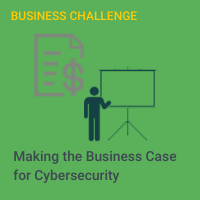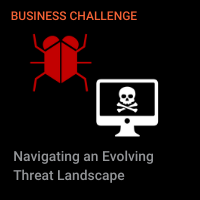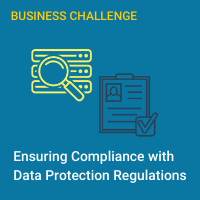
researchHQ’s Key Takeaways:
- Given the number of variables involved in cybersecurity spending, an appropriate budget can be determined only after careful assessment of an organization’s current and future needs and capabilities.
- A company’s risk appetite and cybersecurity maturity ambition level can be considered by developing an asset inventory and abiding by board advice on which assets and threats to prioritize.
- Effective investments can be determined by aligning programs with maturity frameworks, determining current company position and target maturity, and rank investments according to their ability to lead to the target.
- Companies can ensure that their investments work by planning the management and integration of new investments and ensuring that redundancies are by design and not chance.
- Companies should ideally try to enter a cycle in which efficiency-based cost savings generated by new investments free up money for new investments.
If you have any technology budget responsibility, it’s a question you are going to hear—a lot. “Are you spending enough on cybersecurity?” It’s asked by customers, shareholders, regulators, board members, and executives wondering aloud if there’s a price at which peace of mind can be purchased.
Any leader—including CEO, chief risk officer, chief information security officer, even chief financial officer—who is asked the question will find it tremendously difficult to answer. A “yes” will leave you precariously positioned if—or when—your cybersecurity falters. Say “no,” and you’ll likely trigger a scramble to purchase something—anything—that can reverse that answer and protect you from the perception of negligence. No shortage of vendors will step up to oblige with a plethora of technologies, products, services, promises. But there’s no guarantee that any of these “magic bullets” will really meet your organization’s needs. And if you move forward without proper diligence, you risk spending too much on the wrong thing and proliferating the false belief that security can be ensured simply by meeting some budget benchmark.
The best response: answer the question with questions. That way, you’ll hone your understanding of the landscape and begin to build cybersecurity competence—and cyberresilience—across your institution. Then you can make an informed decision about what’s right for your organization.
How much is enough?
No surprise, cybersecurity is expensive and becoming more expensive.
As the world becomes ever more reliant on technology, and as cybercriminals refine and intensify their attacks, organizations will need to spend more on cybersecurity. Indeed, Gartner reports that average annual security spending per employee doubled, from $584 in 2012 to $1,178 in 2018. Some of the leading banks and tech companies have total annual cybersecurity budgets that exceed half a billion dollars and continue to grow.
If you are thinking about solving your cybersecurity challenges by purchasing new technology products and services or increasing security staff, you are likely looking for guidance about how much spending to allocate. But it’s hard to compare an individual company’s spending against any benchmarks. Some of the leading voices in the industry prescribe very different approaches to calculating spending on cybersecurity. (See Exhibit 1.) These differences reflect some fundamental truths, misperceptions, and unknowns about cybersecurity at this stage of the game.

Existing regulations offer no specific guidance to help you understand what you are actually spending on security. There’s also no common definition or accounting methodology to lend clarity. This challenge is unlikely to be resolved given that cybersecurity spending is often implicitly distributed across multiple departments’ budgets. Indeed, cybersecurity is inherently transversal. It requires partnerships between the IT, risk, fraud, physical security, compliance, and legal functions; the lines of business; and others. Some of the most effective security-related spending will never be part of the explicit cybersecurity budget. For example, high security standards will drive up procurement costs, because the least expensive supplier might not have the required security capabilities and certifications. High security standards can also increase technology costs: secure software development methods require more developers, for example, and using strong encryption for web traffic requires more servers. And security can drive up HR costs by requiring more-thorough background checks and training, or a head-count-intensive review process in which two sets of eyes must be applied to all key business processes.
Given these variables, determining the appropriate spending on cybersecurity should come only after a careful assessment of your organization’s current—and future—needs and capabilities.
What are the Right Questions to Ask?
Although, currently, some chief information security officers (CISOs) reportedly enjoy unlimited budgets that give them access to alluring and expensive new technical solutions, no organization has a boundless capacity to implement and operate simultaneous improvements. Such a “give it our all and then some” approach to technology distracts resources from more effective organizational and cultural improvements, and can leave an organization less secure.
Security is not a discrete layer to be piled onto the existing business. CISOs and other executives must collaborate closely to embed security in their organization’s culture and process. More than 70% of breaches are caused by failures on the part of people and processes, so getting these organizational elements correct is crucial. (See “Building a Cyberresilient Organization,” BCG article, January 2017.)
Asking yourself the following three questions can help. (Exhibit 2 summarizes the questions—and how to prepare to answer them.)

What is our risk appetite? One large government-owned bank in the Americas decided that its public mandate required near-perfect system availability, even in the face of a cyberattack. With this low risk appetite, the bank was willing to invest $250 million on high-performance backup systems—much more than other organizations of similar size would spend. Still, it’s important to bear in mind that even near perfect comes with residual risk that no amount of spending can completely mitigate.
Most of the time, an organization must be prepared to accept a level of risk that is not near perfect—that is, in fact, quite a bit less than perfect. For example, after suffering a suspected breach, a US industrial manufacturer contracted with a technology vendor to ship pallets of expensive next-generation firewalls to every location where the manufacturer operated. At certain locations, the firewalls were needed and used. But it became apparent that they were not appropriate everywhere: the company had a long tail of very small offices that were not critical for company operations, did not hold sensitive data, and were sufficiently separated from the critical systems. The expensive firewalls, with their high management overhead, were not the right solution for these small offices. Rather, the right solution was to accept the possibility of an inexpensive breach of noncritical systems rather than investing millions to protect low-value assets.
These examples demonstrate three requirements: First, develop an asset inventory so that you know what you are protecting; this is a crucial step in ensuring that security resources are deployed where they are most needed. Second, with that understanding established, define a risk appetite in order to instill strategic direction in your security-spending decisions. This is a key responsibility of the board of directors. (See Report from Davos: Board Oversight of Cyberresilience, BCG and World Economic Forum report, January 2017.) And, third, to the degree possible, assess the financial impact of the cyberattacks you might face; this is essential to determining how much to invest to mitigate them. This third requirement is a difficult undertaking, as the next question explores.
Where will our investment be most effective? Getting the most value from your cyber investments requires understanding the risks you are facing, your risk appetite, and the defensive capabilities you currently have. The gap between risks and capabilities is where investment must be targeted. This process is effective only if risks are quantified and capabilities are accurately gauged, however. Targeting gaps is only a first step: you also need to make sure you are spending in ways that will sustain your existing capabilities as the environment evolves. Otherwise, you’ll just create new gaps.
Cyberrisk, compared with other kinds of risk, like fire or flood, is a new and evolving field, with limited valuable actuarial data to rely on. (This is a serious challenge even for the insurance industry.) It’s also true that given the pace of technology change, past data is a poor proxy for future cyber mayhem. Put differently, you never have enough relevant data because the threat surface changes as adversaries and computing platforms evolve. For now, at least, making sound decisions regarding cyberrisk must involve both reducing ambiguity to a bare minimum and accepting that some degree of ambiguity is unavoidable.
That is illustrated by the experience of one large health care provider, which originally assessed its cybersecurity risks on an ordinal scale—high, medium, and low. Such assessments are a good start, but ordinal scales are insufficient because one person’s “high” risk can be a 50% probability while another’s can be 70%. Those two figures have fundamentally different implications for how much to invest to mitigate risk. You need to go further by attaching numerical probabilities and eventually monetary estimations to the risks, lending transparency and commonality. Numerical reasoning provides decision-making clarity, and order-of-magnitude accuracy is both useful and possible. It’s hard to make an ROI decision as a business executive without being able to compare apples to apples and dollars to dollars.
It’s true that unforeseen and unimagined dangers lurk, but decision makers cannot be paralyzed by the specter of these possibilities. They must move forward with the best information and best instincts they have. Then, they can turn to building the organizational resilience necessary to address and recover from the unknown unknowns.
Once you understand the possible risks and their impact on your enterprise, you can start to measure how much risk is mitigated by existing capabilities and where the gaps are. Here, it is crucial to understand not merely what capabilities you have on paper but how effectively implemented and operated those capabilities actually are. The difference between what is believed to exist and what is providing operational value can be wide.








